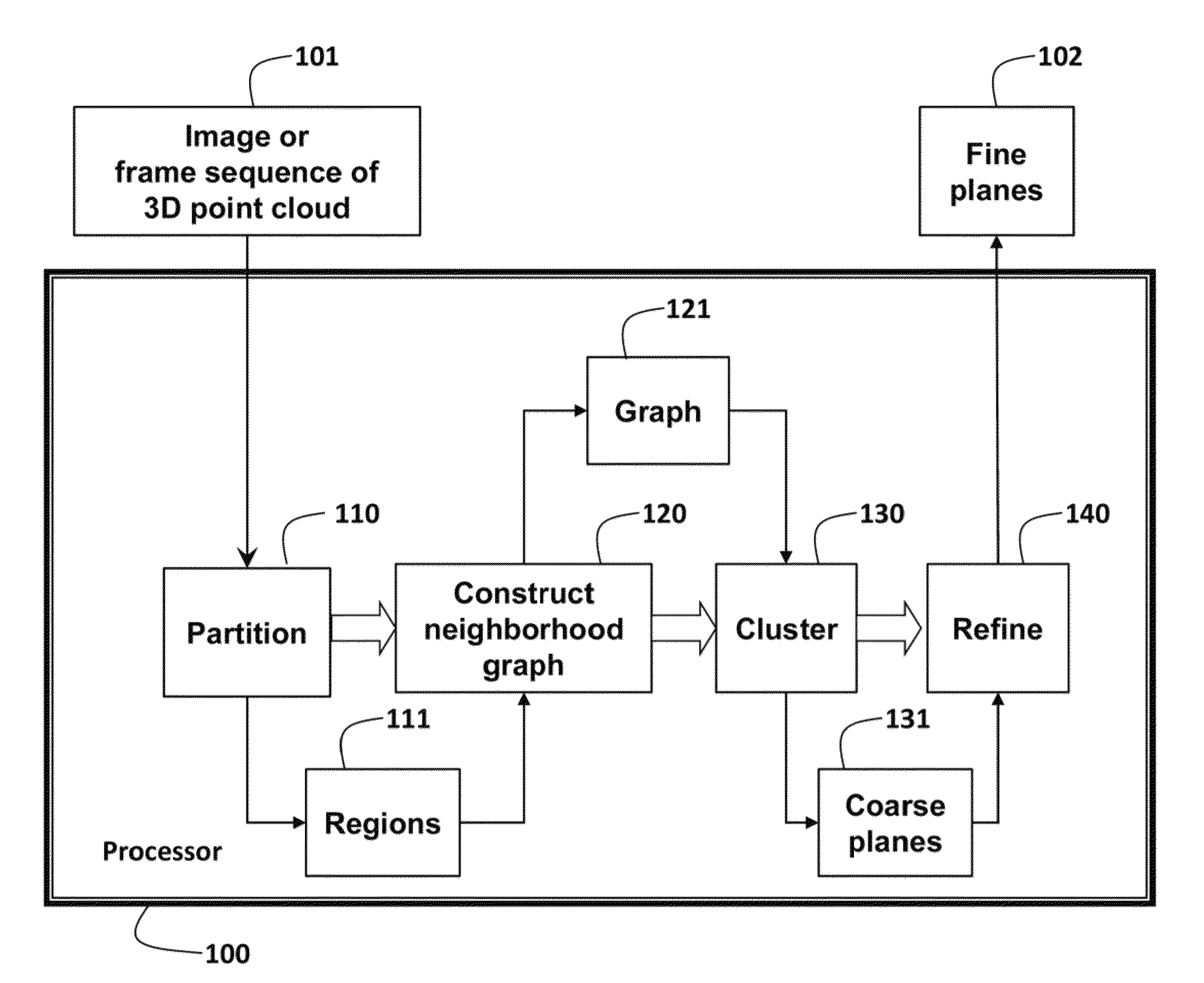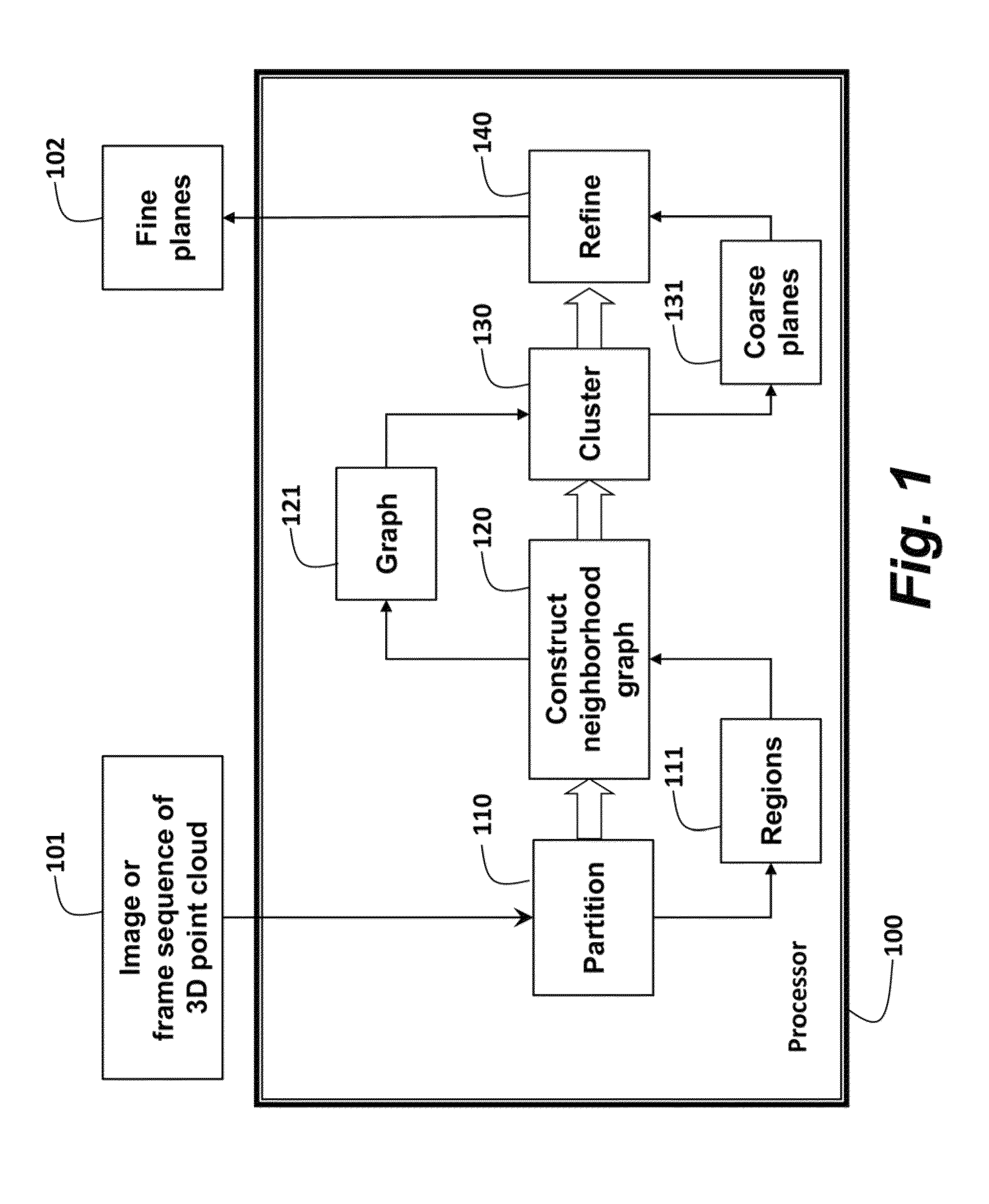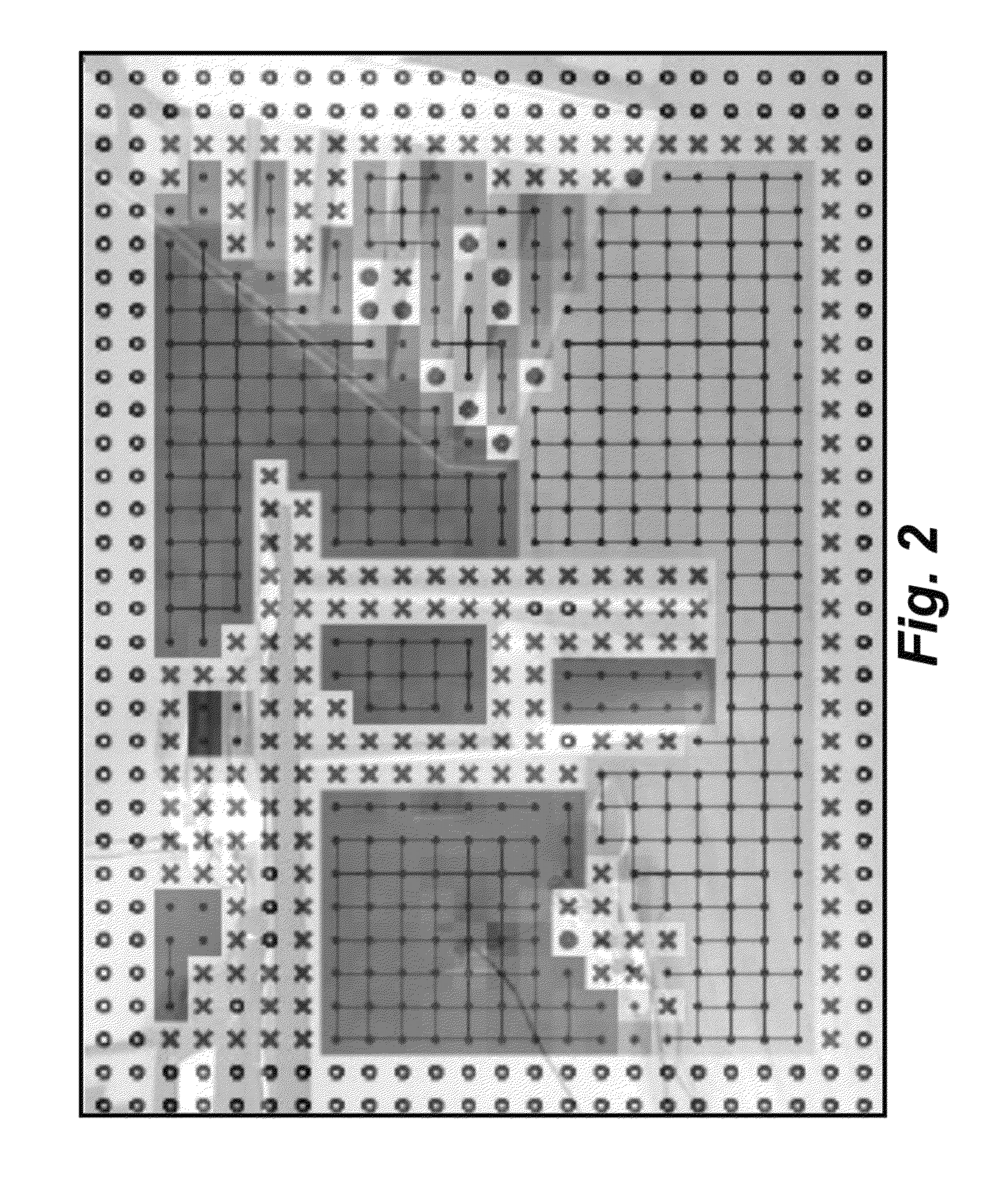Method for extracting planes from 3D point cloud sensor data
a sensor data and point cloud technology, applied in image analysis, image enhancement, instruments, etc., can solve problems such as general noise and redundantness
- Summary
- Abstract
- Description
- Claims
- Application Information
AI Technical Summary
Benefits of technology
Problems solved by technology
Method used
Image
Examples
Embodiment Construction
[0024]As shown in FIG. 1, the embodiments of the invention provide a method for concurrently extracting multiple planes 102 from a 3D point cloud 101 in real time. The data are acquired as an image, or a sequence of frames for real time continues operation, by a 3D sensor. Each image or frame is processed in turn.
[0025]The point cloud is partitioned 110 into a set of disjoint regions 111. A selected size for the regions can vary depending on the application need, e.g., in the range of about 10 to 1000 points per region.
[0026]A graph 121 of nodes and edges is constructed 120 for the regions. The nodes represent the regions and the edges represent spatial relationships of the regions; regions that are next to each other are connected by an edge. Agglomerative hierarchical clustering (AHC) 130 is applied to the graph. At the beginning, each node is a cluster, and then pairs of clusters are merged systematically. Clusters of nodes after the clustering correspond to coarse planes 131. Th...
PUM
 Login to View More
Login to View More Abstract
Description
Claims
Application Information
 Login to View More
Login to View More - R&D
- Intellectual Property
- Life Sciences
- Materials
- Tech Scout
- Unparalleled Data Quality
- Higher Quality Content
- 60% Fewer Hallucinations
Browse by: Latest US Patents, China's latest patents, Technical Efficacy Thesaurus, Application Domain, Technology Topic, Popular Technical Reports.
© 2025 PatSnap. All rights reserved.Legal|Privacy policy|Modern Slavery Act Transparency Statement|Sitemap|About US| Contact US: help@patsnap.com



